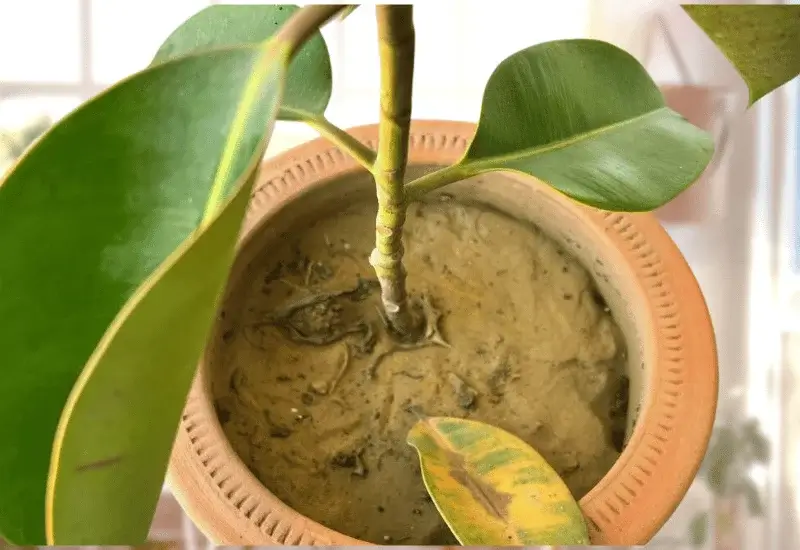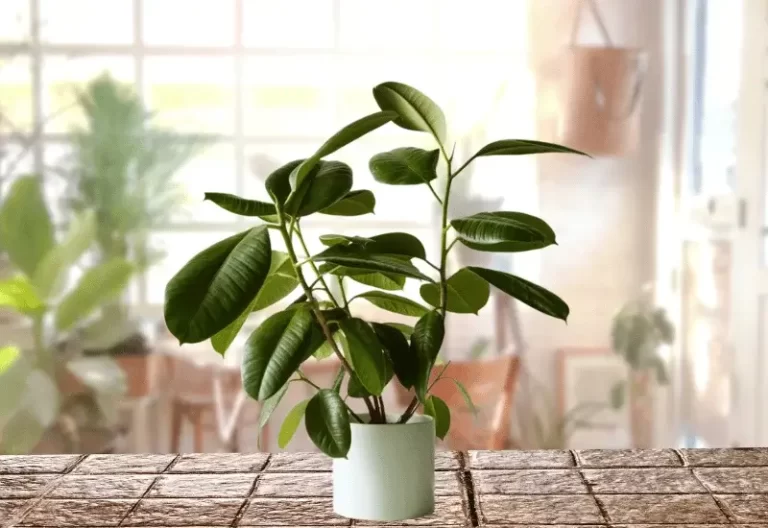How Often Should You Water Your Ficus Plant?
The Ficus plant, also called the fig tree, is a popular indoor plant. It has shiny leaves and helps clean the air in your home. There are different types of Ficus plants, each with its own leaf shape and growth style. They can grow well in many indoor conditions. To keep your Ficus healthy, make sure it gets the right amount of light, water, and humidity. Ficus plants are not only beautiful but also make your home’s air cleaner and fresher. They’re a lovely addition to any room, bringing a touch of nature indoors.
5 Ways to Know When Your Ficus Plant Needs Water
Discovering the right moments to water your Ficus plant involves checking the top soil, watching for falling leaves, adjusting for more sunlight, considering dry weather, and linking water with plant food.
Checking if the Top Soil Is Dry
Checking if the top soil is dry is a simple yet effective way to determine when your Ficus plant needs water. It’s like giving your plant a little test. Just stick your finger into the soil about an inch deep and see how it feels. If it’s dry to the touch at this depth, it’s a good sign that your Ficus is ready for a drink.

If it still feels slightly damp, it’s best to hold off on watering for a bit longer. This method helps you avoid overwatering, which can harm your plant and ensures you’re giving it just the right amount of moisture to keep it happy and healthy.
Read Also: Best Soil for Ficus
When Ficus Leaves Fall Off, It Might Need Water
When Ficus leaves start falling off, it’s a clear signal that your plant might be in need of water. These leaves serve as nature’s own indicators, telling you that something isn’t quite right. If your Ficus loses leaves, especially the lower ones, it could be a sign of water stress. Giving your plant a thorough drink and adjusting your watering routine can often help restore its vitality and prevent further leaf loss.

It’s a visual cue that your Ficus is communicating with you, and by responding promptly, you can help your plant regain its lush and vibrant appearance.
More Sunlight Means Your Ficus Might Need More Water
When your Ficus plant enjoys more sunlight, it might also require more water to stay healthy. Think of sunlight as fuel for your plant. When it receives ample light, it’s actively photosynthesizing and growing. This growth process can make your Ficus thirstier than usual.
So, if you’ve moved your plant to a brighter spot or it’s summertime, it’s a good idea to keep an eye on its water needs. Just remember, with more light, your Ficus may be working up a thirst, and providing a bit of extra hydration can help it thrive and maintain its lush appearance.
Watering More in Dry Weather
During dry weather, it’s important to water your Ficus plant a bit more frequently. Just like us, plants can get thirsty when the weather’s hot and dry. In these conditions, the soil tends to dry out faster, and your Ficus may need a drink to stay healthy and vibrant. Keeping an eye on the moisture level in the soil, as well as the overall weather conditions, can help you adjust your watering routine to ensure your plant’s needs are met during dry spells.
When the sun is shining and the air is dry, don’t forget to give your Ficus a little extra love to help it thrive.
Thinking About Water When You Use Plant Food
It’s important to consider watering when you use plant food for your Ficus. Think of plant food as a meal for your plant; it provides essential nutrients to help it grow and stay healthy. However, these nutrients need water to be absorbed by the plant’s roots. When you’re feeding your Ficus, it’s a good time to ensure the soil is adequately moist.
Watering before or after applying plant food allows your Ficus to make the most of those nutrients, ensuring it receives the full benefit of the meal you’re providing. It’s a simple but vital step in your plant care routine to help your Ficus flourish.
What’s the Best Water for Your Ficus Plant?
The best water for your Ficus plant is clean, room-temperature water. Ideally, you should use water that doesn’t contain any harmful chemicals like chlorine or fluoride, which can be found in tap water. If your tap water is treated with these chemicals, consider using filtered water or allowing tap water to sit out for a day to allow these chemicals to dissipate before using it on your plant. Using room-temperature water is also important because cold water can shock your Ficus’s roots.
Why Too Much Water Is Not Good for Your Ficus
Giving your Ficus plant too much water can hurt it. The roots can get sick and rot if there’s too much water in the soil. Also, too much water can stop air from reaching the roots, and they need air to stay healthy. Overwatering can make your plant look sad with droopy leaves and brown spots.
Having lots of water in the soil can make bugs and plant illnesses more likely. So, to keep your Ficus plant happy, just give it the right amount of water and let the soil dry a bit between waterings.
Conclusion
Taking care of your Ficus plant involves finding the right balance in watering. You can use simple methods like checking the topsoil, paying attention to leaf health, considering sunlight levels, and adapting to the weather. Always remember that too much water can be just as harmful as too little. Providing the right kind of water and allowing the soil to dry between watering is crucial. By understanding your Ficus plant’s needs and responding to them, you can keep it healthy and thriving, adding a touch of natural beauty to your living space.






